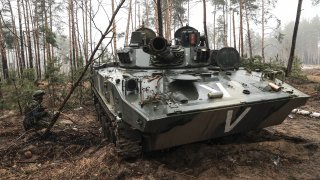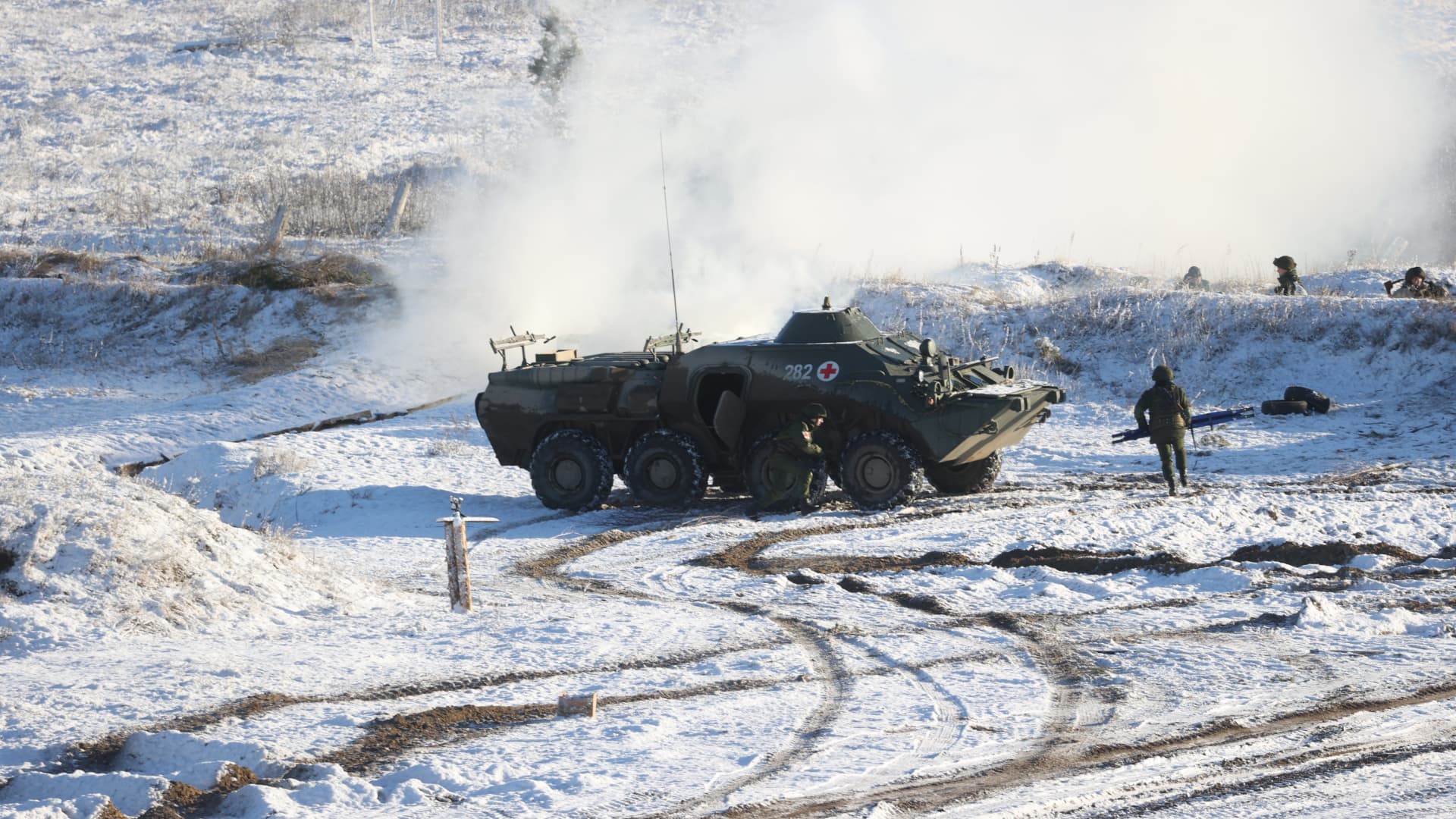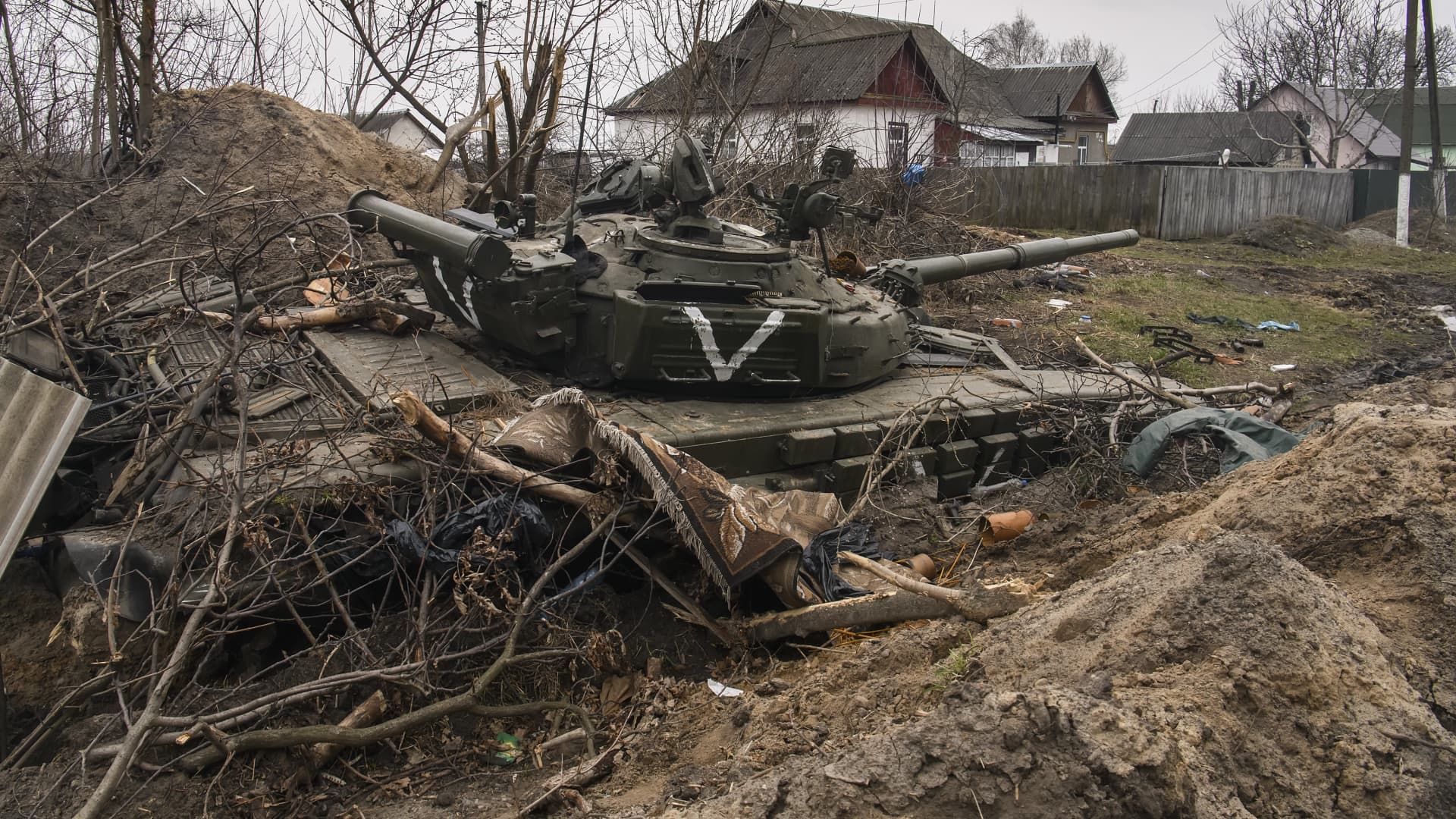
- When Russia invaded Ukraine in February, its military commanders were widely seen to have discounted one very unconventional but effective weapon in Ukraine's arsenal.
- The timing of Russia's invasion, which began on Feb. 24, coincided with what is known locally as the "muddy road season," or "Rasputitsa" in Russian.
- Mud can make Ukraine's terrain and unpaved roads virtually unpassable.

When Russia invaded Ukraine in February, its military commanders were widely seen to have discounted one very unconventional but effective "weapon" in Ukraine's arsenal: its infamous muddy season.
The timing of Russia's invasion, which began on Feb. 24, coincided with what is known locally as the "muddy road season," or "Rasputitsa" in Russian. It's a phenomenon that takes place twice a year, first in spring — when the winter freeze subsides and the country's terrain and unpaved roads become virtually unpassable as they turn to mud — and then in the fall, when there can be heavy rain.
Get Southern California news, weather forecasts and entertainment stories to your inbox. Sign up for NBC LA newsletters.
The mud is seen by military experts to have helped to slow Russia's advance in parts of the country, particularly the north. Images and video circulating online have shown Russian tanks, trucks and other armored vehicles stuck and abandoned on muddy roads or fields in Ukraine.
That's prompted some disbelief among Russia analysts and military experts, who said Russia's military commanders should have been better prepared for conditions on the ground, and able to avoid the quagmire caused by Ukraine's muddy spring terrain.
It's a phenomenon familiar in the history books: Napoleon Bonaparte's invasion of Russia in 1812 was famously slowed by the mud, as were Hitler's armies, which invaded the then-Soviet Union in 1941 and encountered the same logistical problems posed by the mud and inhospitable terrain that Russian troops have faced in the last few weeks.

Russia's military should've known better what conditions their forces would face, experts said.
Money Report
"Ukrainian mud and what is known in Russian as 'rasputitsa' is the period after the winter where you get impassable roads ... this has been known about for hundreds of years, literally Napoleon had this problem. So yes, it is a tactical feature that is advantageous for the Ukrainians and it was particularly important in the north where it is a lot more wooded," Maximilian Hess, fellow at the Foreign Policy Research Institute, told CNBC.
It was initially believed that Russia would achieve a quick victory in Ukraine. But the country faced strong resistance from Ukrainian forces, which Western allies have helped to equip with weaponry.
Prior to the invasion, Russia had amassed over 100,000 troops along its border with Ukraine and had carried out military drills with its ally Belarus, which lies to the north of Ukraine. But Moscow had insisted repeatedly that it had no plans to invade.

Despite the military exercises ahead of the invasion, military analysts have said the first phase of the war — which has seen Russia gain ground in the south and east of the country but fail to make strides in the north, with its forces now pulled back and concentrating on eastern Ukraine — showed a lack of planning, preparedness and tactical skill among its military command and soldiers, many of whom are conscripts.
Hess said just Russia's inability to deal with Ukraine's muddy season "shows real issues with the professionalism of the military."
"It raises real questions for me ... the Russians have been doing these [military] drills and practicing this foreign invasion for almost a decade now and they still didn't think, or didn't have enough coordination, to put the right units in the right places, and to move in the right way to best deal with something [the mud] that has literally been known to be a problem for 300 years."
U.S. intelligence suggested that Russia had wished to invade Ukraine earlier in the year but had postponed its offensive at the behest of China so it would not overshadow the Beijing Winter Olympics that ended on Feb. 20.
Sam Cranny-Evans, a research analyst at the U.K. defense think tank RUSI, told CNBC that most of Russia's military vehicles would have been able to cope with the mud in Ukraine, but problems had arisen from multiple vehicles using the same tracks, a foreseeable problem for any military commander with a basic understanding of "terramechanics" — or "the interaction of soil with off road vehicles."
"A lot of their vehicles would be fine moving through mud, providing that they didn't repeatedly drive through the same track," he said.
"But I would argue that other things have limited their maneuver more in terms of their reliance on railheads and roads for their logistics," he said, adding that the size of Ukraine also posed an extra challenge to Russia's war machine, particularly for units farther away from Russia, such as those in northern Ukraine.
Many of these units have since beaten a tactical retreat to focus on eastern and southern regions, where the second phase of the war is currently playing out in the Donbas and along the Black Sea.







